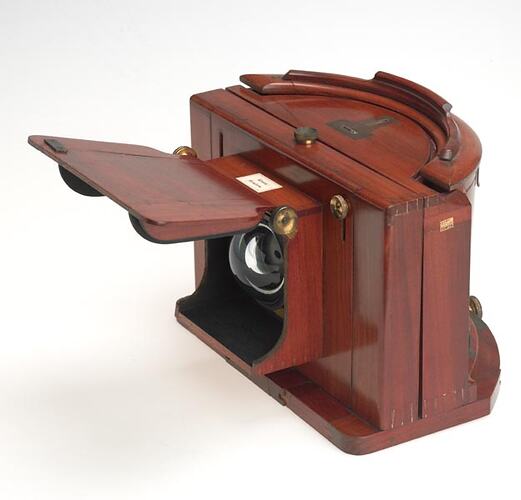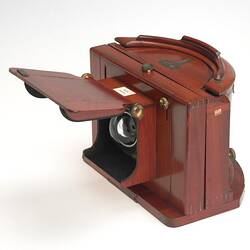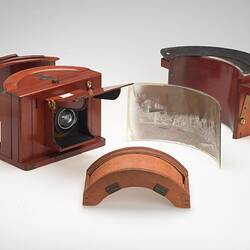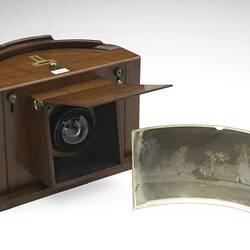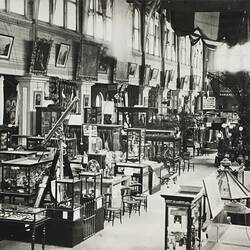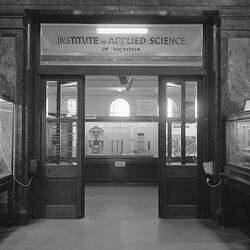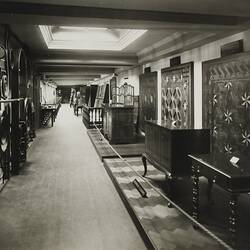Summary
The front section of the main camera body for a panoramic camera, containing the lens and the attached hood or flap. The camera was designed by Thomas Sutton (1819-75) of St. Brelade, Island of Jersey, in 1859 and manufactured by Thomas Ross, London, circa 1861.
The curved-back camera is made of wood and designed to take curved glass wet-plates which, coupled with the wide angled lens, produced panoramic photographs. The camera was fitted with a Sutton achromatic panoramic lens, the earliest panoramic wide-angle lens ever produced and patented by Sutton on the 28th September, 1859 (patent no. 2193). It consists of a globular sheet of flint glass filled with filtered distilled water when in use, and divided into two equal compartments by a brass diaphragm. The angle of field is 140 degrees. Includes curved vessel for sensitising the plate, curved printing frame and a curved wooden plate holder.
The Museum holds another, larger Sutton panoramic camera (ST 029632), which was used by the pioneering fieldwork photographer Richard Daintree during the Victorian Land Survey of 1864.
Physical Description
Curved wooden camera with achromatic wide-angle lens.
More Information
-
Collecting Areas
-
Acquisition Information
Purchase
-
Designer
-
Manufacturer
T. Ross - Ross Optical Company, London, Middlesex, England, Great Britain, circa 1861
-
Place & Date Made
-
Inscriptions
Inscribed on ivory name plate on top of lens cover: 'Ross London' Inscribed on brass lens rim: 'Sutton / T. Ross / No. 47'.
-
Classification
-
Category
-
Discipline
-
Type of item
-
Keywords
